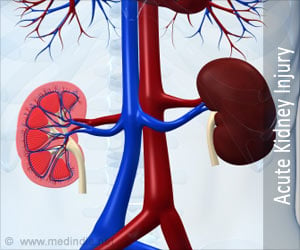
Importance of Identifying an Effective Biomarker for Parkinson’s Disease
α-synuclein seed amplification assay (αSyn-SAA) technique amplifies very small amounts of misfolded α-synuclein aggregates in samples from Parkinson’s patients so that they can be detected using standard laboratory techniques. The researchers sought to assess αSyn-SAA’s usefulness in detecting early signs of Parkinson’s.‘New technique identifying hallmark protein can accurately detect Parkinson's disease and recognize early symptoms in individuals at risk of developing the neurodegenerative disease.’





Researchers used data from the Parkinson’s Progression Markers Initiative cohort. Among the 1,123 participants were individuals with a Parkinson’s disease diagnosis, and at-risk people with gene variants linked to the condition. Samples of participants’ cerebrospinal fluid, which surrounds the brain and spinal cord, were analyzed using αSyn-SAA.Prodromal individuals exhibit non-motor symptoms, including REM sleep disturbance and loss of smell -- both potential Parkinson’s precursors -- but lack the tremors or muscle stiffness that come later in the disease’s development. Prodromal participants were included to help determine αSyn-SAA’s usefulness in predicting Parkinson’s onset.
αSyn-SAA : A Useful Technique for Diagnosing Parkinson’s Disease
Findings confirmed that αSyn-SAA can accurately detect people with Parkinson’s disease, with positive results in 88% of diagnosed participants. Most prodromal participants had positive αSyn-SAA results, indicating α-synuclein aggregates, despite not having been diagnosed with Parkinson’s disease.Among those recruited with the sleep disorder, 85% had positive αSyn-SAA results. Similarly, among those reporting the loss of smell, 89% had positive αSyn-SAA results. Such loss of smell was the clinical feature that most strongly predicted a positive αSyn-SAA result.
Among participants with Parkinson’s disease and loss of smell, 97% had positive αSyn-SAA results compared to 63% of those whose sense of smell was unchanged.
Importantly, most prodromal participants with positive αSyn-SAA results had brain scans that did not show a decline in the number of dopamine-producing nerve cells, a pre-diagnosis biomarker. The loss of dopamine-producing cells has been implicated as a cause of Parkinson’s disease.
Advertisement
These findings suggest that the αSyn-SAA technique is highly accurate at detecting the biomarker for Parkinson’s disease regardless of the clinical features, making it possible to accurately diagnose the disease at its early stages.
Advertisement
Source-Eurekalert















